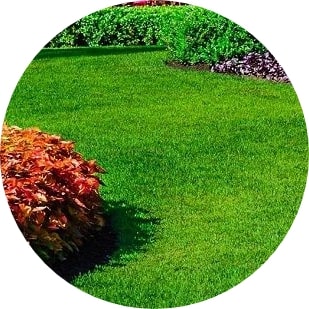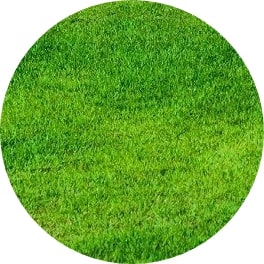How much is lawn care in MN?
The cost of lawn care services in Minnesota (MN) can vary widely depending on several factors, including the specific services you require, the size of your lawn, the condition of your lawn, and the region within Minnesota where you live. Here are some factors that can influence the cost of lawn care in Minnesota:
- Lawn Size: The size of your lawn is a significant factor in determining the cost of lawn care. Larger lawns will generally cost more to maintain than smaller ones.
- Type of Services: Lawn care services can include mowing, fertilization, weed control, aeration, overseeding, pest control, and more. The more services you request, the higher the cost is likely to be.
- Frequency: How often you require lawn care services can affect the cost. Regular maintenance services like mowing and fertilization are typically less expensive on a recurring basis than one-time services or infrequent maintenance.
- Lawn Condition: If your lawn is in poor condition and requires extensive renovation, such as reseeding or sod installation, it will generally cost more than routine maintenance.
- Location: The cost of lawn care services can vary from one part of Minnesota to another. Urban areas and areas with a higher cost of living may have higher prices for lawn care services.
- Lawn Care Provider: The choice of lawn care provider, whether it’s a professional landscaping company, a local lawn care service, or DIY, can also impact the cost.
- Seasonal Variations: Some services, like snow removal during the winter months, may be more expensive during certain seasons.
To get an accurate estimate for lawn care services in your specific location and for your lawn’s unique needs, it’s best to contact local lawn care companies or landscapers for quotes. They can assess your lawn, discuss your requirements, and provide you with a customized estimate.

Keep in mind that the cost of lawn care can also vary from year to year and may be influenced by factors such as fuel prices, labor costs, and changes in the local economy. It’s a good practice to obtain multiple quotes and compare services and prices to make an informed decision about your lawn care needs in Minnesota.
When should I fertilize lawn in Minnesota?
Fertilizing your lawn in Minnesota should be done at specific times of the year to align with the growing season and the needs of your grass. The two primary times for fertilizing lawns in Minnesota are in the spring and fall:
- Spring Fertilization (Late April to Early May):
- Timing: The first round of fertilization in Minnesota is typically done in late April to early May, as the grass begins its active growth phase. Ideally, wait until the soil has thawed and the grass starts to green up, but before the summer heat arrives.
- Fertilizer Type: Use a balanced, slow-release fertilizer with a nitrogen-phosphorus-potassium (N-P-K) ratio suitable for your grass type. For cool-season grasses commonly found in Minnesota (such as Kentucky bluegrass and perennial ryegrass), a balanced fertilizer with a ratio like 20-5-10 or similar is suitable for spring application.
- Application Rate: Follow the recommended application rate on the fertilizer package, and avoid over-fertilizing, as this can lead to issues like excessive growth and thatch buildup.
- Watering: After fertilization, water your lawn thoroughly to help the nutrients penetrate the soil.
- Fall Fertilization (Late August to Early September):
- Timing: The second round of fertilization is typically done in late August to early September, as the summer heat starts to wane. This fall application helps your lawn recover from summer stress and encourages root growth before winter.
- Fertilizer Type: Use a slow-release fertilizer with a lower nitrogen content than your spring fertilizer. A ratio like 10-20-20 or similar is suitable for fall application in Minnesota.
- Application Rate: Follow the recommended application rate, but use a fertilizer with lower nitrogen to promote root development and prevent excessive top growth.
- Watering: Water the lawn after fall fertilization to ensure the nutrients reach the root zone.
It’s important to follow best practices for lawn fertilization in Minnesota to avoid issues like nutrient runoff into waterways and to ensure the health of your lawn. Additionally, consider conducting a soil test to determine your lawn’s specific nutrient needs, as this can help you apply the right type and amount of fertilizer.

Keep in mind that the timing of fertilization may vary slightly based on your specific location within Minnesota and the local weather conditions, so it’s a good idea to monitor your lawn’s growth and consult with local lawn care experts or your county’s extension office for precise recommendations.
Minnesota lawn care prices
The cost of lawn care services in Minnesota can vary depending on several factors, including the specific services you require, the size of your lawn, your location within the state, the condition of your lawn, and the lawn care provider you choose. Here are some approximate price ranges for common lawn care services in Minnesota:
- Lawn Mowing: The cost of lawn mowing services in Minnesota typically ranges from $30 to $60 per visit, with variations based on lawn size, frequency of service, and the complexity of the job. Larger lawns or those with challenging terrain may be at the higher end of this range.
- Fertilization and Weed Control: Annual or seasonal lawn fertilization and weed control programs can range from $200 to $500 or more, depending on the size of your lawn and the number of applications required.
- Aeration: Lawn aeration services typically cost between $50 and $100 per treatment, with factors such as lawn size and complexity influencing the price.
- Lawn Seeding: The cost of seeding a lawn in Minnesota can vary depending on factors like grass type, lawn size, and the condition of the soil. Prices typically range from $0.05 to $0.10 per square foot.
- Lawn Pest Control: Lawn pest control services, such as treatments for grubs or insects, can range from $100 to $300 or more, depending on the extent of the problem and the size of your lawn.
- Lawn Renovation or Sod Installation: If you need to renovate your lawn or install new sod, prices can vary significantly based on the size of the area, soil preparation, and the type of grass used. Costs may range from $1 to $3 per square foot or more.
- Snow Removal: If you require snow removal services during the winter months, prices can range from $30 to $75 or more per visit, depending on the size of your property and the amount of snowfall.
It’s important to note that these are approximate price ranges, and actual costs may vary based on local factors, the specific needs of your lawn, and the lawn care provider you choose. To get an accurate estimate for your lawn care needs, it’s recommended to obtain quotes from local lawn care companies. Be sure to inquire about their pricing structure, any additional fees, and whether they offer bundled services or seasonal packages, which may provide cost savings. Lawn care prices in Minnesota >>





